Paul Binnie
About the Artist
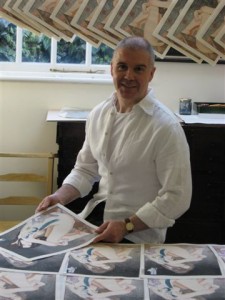
Paul Binnie (b. 1967)
Paul Binnie was born in Alloa, Scotland in 1967 and studied fine art at the University of Edinburgh and Edinburgh College of Art, graduating with an M.A. (Hons) in 1990.
He lived in Paris from 1990 to early 1993, working both as a professional artist and as a teacher of art at the Ecole du Louvre and the Atelier Hourde.
His growing interest in Japanese woodblock prints led him to travel to Tokyo in 1993, where he lived until the end of 1998 in the pursuit of the skills and techniques of Japanese woodblock print making. Binnie had discovered Japanese prints of the Ukiyo-e school in his teens while a student at the University of Edinburgh and Edinburgh College of Art, and had begun to collect prints at that time, an enthusiasm which continues until now. Unable to enter the Yoshida studio, his first choice for training, due to the illness of Yoshida Toshi, he was advised to contact Seki Kenji. Kenji had been the head printer at Doi-Hangaten and Binnie worked with him for several years developing his own block printing style. He also made friends with woodblock artist Ralph Kiggell, who was studying at the Yoshida Studio at the time. There Paul Binnie met Toshi Yoshida, and made numerous visits to the Yoshida Studio to study the carving and printing procedures there.
In Tokyo. Paul Binnie lived in Sendagaya, a few streets away from the National Noh Theatre. He became absolutely fascinated by both Noh and Kabuki, and like 18th and 19th century Japanese woodblock artists he started making sketches of Kabuki and Noh actors behind the scenes. These sketches were used both for his subsequent print designs and for a vast array of oil paintings.
Binnie is currently working on a large series of prints, Nihon Meisho Zu-e (Famous Views of Japan) and these are released every few months when they are completed, adding to the earlier landscapes, such as the series Shitamachi Settsugekka (Snow, Moon and Flowers of Downtown Tokyo), which he produced in Japan. He was also interested in tattoos, and has designed numerous prints of this subject, in both woodblock and Kappaban stencil, which have proved very popular with a western audience. He is one of the few contemporary artists to successfully use this technique. His ongoing series Edo Sumi Hayaku Shoku (A Hundred Shades of Ink of Edo) has many enthusiastic collectors. A recent focus for him is bijin-ga, or prints of beautiful women, which have become a new theme in his work, with one series, Shiki (Four Seasons) completed in Spring 2005, a second, Azuma Nishiki Bijin Awase (A Collection of Eastern Brocade Beauties) is added to periodically and a third, Hyakunen no Hana (Flowers of a Hundred Years).
Binnie is one of the few foreign artists to combine the skills of designer, block-cutter and printer, all of which in the past were specialist jobs performed by individuals. He has two distinct styles; the “Shin hanga” finesse style which is influenced by Ukiyo-e, Natori Shunsen, Ota Gako and artists of the Taishõ period and the “Sõsaku hanga”, or creative print style, where the design is worked out directly on the block. Binnie uses kappaban, or stencil printing, when he wishes to exploit effects of shading and opaque tones of color, often on a black Japanese paper, with small editions and painterly applications of ink. The technique was originally developed in Kyoto, the kimono making centre of Japan, as a method for dying silk but has been used by numerous Japanese print artists of the twentieth century as a low-tech fore-runner of silk screen printing.
Binnie has exhibited widely in such places as Tokyo, Paris, New York, London, Hong Kong, Sweden, Scotland and the Netherlands.
The catalogue raisonné of his woodblock prints was published in 2007; i.e. Paul Binnie, A Dialogue with the Past , with essays by Dr. Kendall H. Brown, Paul Griffith and Akama Ryo, Professor at Ritsumeikan University, Kyoto, where a selection of his work was exhibited in November 2007.
Paul Binnie moved to the U.S in 2020 where he currently resides.
Bijin-ga (Beauties) & A Hundred Shades of Ink of Edo
Paul Binnie
"Tears (red-bronze variant)" Namida
Medium: Japanese Woodblock Print
Year: 2009, released in 2023
Print size: 17.75 x 12.25 in.
Image size: 15 x 11 in.
Signed lower right in kanji, Bin-ni followed by the artist’s gold seal, Binnie, titled “Namida”, embossed Binnie and signed and numbered in pencil. Printed on a heavier paper from Iwate prefecture.
Edition: 40
Description: Red-ground variant of Morning Tears Asa ni Namida from the Eastern Brocade Beauties series.
Condition: Mint.
Price: $950
Paul Binnie
"Bubble Era of 1990" Baburu jidal
Hyakunen no Hana series (Flowers of a Hundred Years)
Medium: Woodblock
Date: 2023
Print size: day oban tate-e - 47 x 33 cm / 18.5 x 13 inches.
Image size: 17.5 x 11.5 in.
Inscription: The series title Hyakunen no Hana and print title Senkyuhyaku Kyujunen no Baburu Jidai in karazuri ('blind-printing') on the upper left margin, signed in kanj, Bin-ni at lower right followed by the red artist's seal, BINNIE, numbered and signed in pencil on the bottom margin.
Description: The Bubble Era in Japan saw vast fortunes being made on property speculation and an economy on overdrive. The setting for this print is in a nightclub, perhaps the infamous Juliana’s Tokyo, where overpriced drinks were downed by expense-account execs. The young lady has the highly fashionable ‘chapatsu’ or brown dyed hair of that time, a red satin dress with silver embroidery and gold jewelery, and the de rigueur accessory, a feather fan, to dance with. Like all the prints in this series, there is silver and bronze metallic pigment, deep embossing and 23 carat gold leaf employed on this piece, as well as 37 colors printed, including overprinting the deep black of the background three times to give a velvety depth.rent in this regard, some showing the resist strongly, others showing the shading more.
Edition: 100
Condition: Mint
Price: $1,100
Paul Binnie
“Kabukicho”
Series: Pictorial Allusions, Reused Blocks / Honga Dori Series
Date: 2020
Medium: Color Woodblock utilizing 81 colors and the most impressions that Binnie has ever used in any of his woodblock prints.
Year: 2020
Image Size: 16.5 x 20.75 in., 42 x 52.7 cm.
The series title, Honga Dori, in silver kanji at top of right sheet (incorporated into pink neon street sign) and the print title in red kanji, Kabukicho (incorporated into yellow sign at top right, and the ichiban-gai gate) signed in kanji, Bin-ni, on lower left followed by red artist's seal, Binnie, and silver seal on lower right, Binnie signed in pencil at bottom of right sheet, Paul Binnie, from an edition of 100, 2020. Numbered in pencil on the bottom margin.
Edition: 100
Remarks: "The old blocks of two Kabuki actors were incorporated into a busy street scene in Shinjuku, modern Tokyo’s bustling pleasure district. The various characters in the crowd were drawn from real people and there are some word games within the signs above. Kabukicho, the print title, and Hanga Dori, the series title, appear alongside the phrase ‘chō beli kabuki’ (it’s really very Kabuki) on the right sheet. The left sheet has the question and answer ‘ukiyo e? ukie yo!’ (Is it Ukiyo-e? It’s a perspective picture in fact!). At 81 colors, this is the most separate printings I have ever used in a woodblock print so far.
"Right hand sheet of diptych. Finally after a very long development this print is complete, my tribute to Toshūsai Sharaku, whose print of the Kabuki actors Matsumoto Koshiro IV and Nakayama Tomisaburo I from 1794 was the starting point of this design. Two years ago I bought a set of blocks to make this actor design and decided to incorporate them into a piece of my own, placing these 18th century Kabuki actors into contemporary Tokyo, appropriately enough in Kabukicho. I have printed the actors in a muted, faded palette to bring to mind old prints of the past and this sheet employed the 10 colors of the reproduction blocks plus 36 more, making 46 colors in total here.
"Left hand sheet of diptych. The left hand sheet of this diptych is all my own design made to allow a broader scope to the image; diptychs and triptychs were popular in Ukiyo-e (Floating World Pictures), Japanese woodblock prints of the 18th and 19th century. This sheet will also be created as a stand-alone design whenever I eventually receive paper from Japan, and it uses 35 colors, bringing the total number used on this piece to 81. Some colors appear on both sheets for continuity between the two sides but many colors are used in only one area." Binnie, May 2020
Condition: Mint.
Price: $1,050
Paul Binnie
“Cat Feathers: Blue”
Date: 2018
Medium: Color woodblock print
Image: aiban tate-e 13 1/8 by 9 3/4 in., 33.3 by 24.7 cm
Edition: 100
Signed at upper right in kanji, Bin-ni, with artist's red seal, BINNIE, signed in pencil on the bottom margin,
Description: The print design inspired by a 2018 commissioned portrait of a lady with her cat.
Condition: Mint
Price: $370
Paul Binnie
"Ushiwakamaru and Benkei" Ushiwakamaru to Benkei
Medium: Woodblock
Date: 2016
Size: oban tate-e; 16 1/8 x 11 3/8 in., 40.9 x 29 cm.
Signed in silver kanji, Bin-ni, with karazuri (embossed) artist's seal Binnie, the title on the left margin, Ushiwakamaru to Benkei, and sealed again on the bottom margin, Binnie, signed in pencil Paul Binnie, 2016. Numbered in pencil along bottom margin.
Edition: 50
Description: Ushiwakamaru to Benkei' (Ushiwakamaru and Benkei) is a tattoo design made to fit with an Utagawa school print of male legs, separated from its upper half. My replacement upper half fits with my continuing interest in tattoo motifs and works rather well as a stand-alone design, plus the image of the two heros of medieval Japan is loosely based on a painting by Torii Kotondo. As ever, I like the model and his tattoos to interact in some way, so he is holding a short sword in a similar pose to Ushiwakamaru in the tattoo. Paul Binnie
Condition: Mint
Price: $650
Paul Binnie
"Hiroshige's Edo" Hiroshige no Edo’
Edo zumi hyaku shoku series (A Hundred Shades of Ink of Edo)
Japanese woodblock print, 2015.
Paper size: 16.5 x 12.5 in.
Image size: 15 x 11 in.
Edition: 100.
Signed and numbered in pencil with the series title cartouche in the upper right margin, the print title to the left, signature in gold, seal in red.
Not Available - Wanted
Paul Binnie
"Alluring Figure" Adesugata
Series: Azuma Nishiki Bijin Awase series: (A Collection of Eastern Brocade Beauties)
Medium: Japanese woodblock print
Date: 2015
Print size: 18 x 12 in.
Image size: 15 x 11 in.
Edition: 100
The signature is in bronze metallic pigment, and there is blind embossing in the signature in the lower margin, numbered and signed in pencil. Her sheer cloth is the green of Japanese tea, embellished with flower buds in sliver metallic pigment and 23c gold leaf. In addition, there is an extra black lacquer-printed block in the hair.
Condition: Mint
Price: $950
Paul Binnie
"A Modern Girl of 1920" Senkyuhakunijuunen no Moga
Series: Hyakunen no Hana series (Flowers of a Hundred Years)
Medium: Japanese Woodblock Print
Date: 2013
Print size: 47 x 33 cm / 18 ½ x 13 in.
Image size: 17 1/2 x 11 1/2 in.
Signed, numbered and titled.
Edition: 100
Notes: "The Japanese title Moga, is a contraction of the first two syllables of the two words of the phrase; i.e. 'modan' (modern) and 'garu' (girl). Moga were a cultural phenomenon similar to flappers in the West, young women who escaped from the paternalism and family controls of previous decades and did many things the older generations found shocking. They cut their hair into shorter styles, wore western-style clothes, smoked cigarettes and drank alcohol - such as the Manhattan cocktails we see here - while dancing or flirting with young men (hence two cocktails), things we might take for granted today, but which were a complete break with expectations of more traditional Japanese society. The 1920s were an economic boom period, and young women could have jobs that gave them freedom to live their lives away from controls and restrictions imposed by their parents’ generation. A flood of images and ideas from the West entered Japan between the wars, and the colour scheme of this design reflects the red, white and blue of the USA, Britain and France, all countries Moga were fascinated by.
There is a famous and rare print by the Shin Hanga (New Prints) artist Kobayakawa Kiyoshi called Horoyoi (Tipsy) of 1930, and this was a reference point for Moga, particularly in the strong deep-red background. However, Kiyoshi seems to criticise his slightly drunk, chubby and bleary-eyed model, whereas Paul Binnie's feeling about the new freedoms of the period is one of wholehearted support, and he celebrates the new-found independence women were taking for themselves at this time.
The new print is in the same format as the first two designs in the set, Kuchi-e and Ebicha Hakama, a large Dai-Oban format. As before in this set, the printing is lavish, and as well as 47 colour and bokashi (shading) printings, it employs mica, embossing, silver metallic pigment and 23-carat gold leaf." Paul Binnie
Condition: Mint
Price: $1,100
Paul Binnie
"Sharaku's Caricatures" Sharaku no Giga
Edo zumi hyaku shoku series (A Hundred Shades of Ink of Edo)
Medium: Japanese Woodblock Print
Date: 2011
Image size: Oban - 15 x 11 in.
Signed and numbered in pencil with the series title cartouche in the upper right margin, the print title to the left.
Edition: 100.
Description: A young male model twists his body and spreads his hands to echo the dynamic image tattooed on his back, which is based on Tōshūsai Sharaku’s famous half-length portrait of Ōtani Oniji III (1794). The mask in the title cartouche is a caricature of the face of the famous Kabuki actor Ichikawa Ebizō V. Beneath the artist’s signature is a rebus of the artist’s own face, comprising the stylized shapes of the letters of his fullname in English.
The print by Sharaku of Otani Oniji which forms the main tattoo design is one of the best-known prints of the enigmatic Sharaku, who only produced prints for a short time in 1794-5, but who has left us around 140 designs from that brief period. The unusual position of the hands in this print were the key to the dramatic, dynamic pose of the model, for though they represent the frozen action of the Kabuki stage, it could be the model is reacting to a loud noise or shock, and he is instinctively moving to protect himself. The similarity in the position of the hands of the tattoo and the live man is vital to this design. The small cartouche shows Ichikawa Ebizo, maybe one of the most striking faces in this group, and one which well deserves to be used as a caricature, and the seal here is Paul’s own self-caricature, made up of the letters of my name. This is the ninth design in the continuing series Edo Zumi Hayaku Shoku (A Hundred Shades of Ink of Edo) of tattoo prints.
In the permanent collection of the Metropolitan Museum of Art, New York
Condition: Mint.
Price: $650
Paul Binnie
"First Night" Shoya
Azuma Nishiki Bijin Awase series: (A Collection of Eastern Brocade Beauties)
Japanese woodblock print, 2011.
Print size: 17.5 x 12 in.
Image size: Oban tate-e, 15 x 11 in.
Edition of 100.
White mica background over gofun, baren sujizuri in the pink robe to her left, the red hair accessories embellished with mica; signed at left in kanji, Bin-ni, followed by artist's red seal Binnie, the series title on the upper left margin, Azuma nishiki bijin awase, the print title on the lower left margin, Shoya, embossed Binnie at the center of the bottom margin, and numbered and signed in pencil.
Condition: Mint.
Price: $950
Paul Binnie
"Hair Combing" Kamisuki
Medium: Japanese Woodblock Print
Date: 2010
Print size: Dai-oban, 19 x 13 1/2 in.
Image size: 17 1/2 x 11 1/2 in.
Edition: 100
Description: The mauve-purple kimono offsets the patterns of irises and butterflies, and includes subtle bokashi or shading in the flowers. Details include 22-carat gold leaf on the comb, lacquer printing in the hair, and extensive embossing to suggest the fabric of the kimono. The pink baren ’sujizuri’ background melts into hints of yellow, reflecting the tones of the kimono motifs. These effects have been achieved with 34 printings, including embossing and gold leaf.
Condition: Mint
Price: $1,050
Paul Binnie
"Kiyonaga's Pipe" Kiyonaga no Kiseru
Edo zumi hyaku shoku series (A Hundred Shades of Ink of Edo)
Woodblock, 2010.
Image size: Oban - 15 x 11 in.
Signed and numbered in pencil with the series title cartouche in the upper right margin, the print title to the left.
Edition: 100.
Condition: Mint.
Price - $650
Paul Binnie
"Veranda - 2009" Engawa
Series: Azuma Nishiki Bijin Awase series: (A Collection of Eastern Brocade Beauties)
Medium: Japanese Woodblock Print
Date: 2009
Print size: 17.5 x 12 in.
Image size: 15 x 11 in.
Signed and numbered in pencil with red artist’s seal, surname embossed in the middle of the lower margin.
Edition: 100
Condition: Mint
Price: $950
Paul Binnie
"Morning Tears" Asa ni Namida
Azuma Nishiki Bijin Awase series: (A Collection of Eastern Brocade Beauties)
Woodblock, 2009.
Print size: 17.5 x 12 in.
Image size: 15 x 11 in.
Signed and numbered in pencil with red artist’s seal, surname embossed in the middle of the lower margin. Printed on a heavier paper from Iwate prefecture.
Edition: 100.
Condition: Mint.
Price - $950
Paul Binnie
"Maiko in Kyoto" Kyo Maiko
Series: Azuma nishiki bijin awase series: (A Collection of Eastern Brocade Beauties)
Medium: Japanese Woodblock Print
Date: 2008
Image: 15 x 11 in.
Edition: 100
Signed and numbered in pencil.
Condition: Mint
Price: $925
Paul Binnie
"Kunisada’s Danjuro" Kanisada no Danjuro
Edo zumi hyaku shoku series (A Hundred Shades of Ink of Edo)
Woodblock, 2006.
Print size: 16.5 x 12 in.
Image size: 15 x 11 1/2 in.
Edition: 100
Signed and numbered in pencil.
In the permanent collection of the Metropolitan Museum of Art, New York
Condition: Mint.
Price - $650
Paul Binnie
"After the Bath" Furo Agari
Series: Azuma nishiki bijin awase series: (A Collection of Eastern Brocade Beauties)
Medium: Japanese Woodblock Print
Date: 2006
Image: 15 x 11 in.
Edition: 100
Signed and numbered in pencil.
Condition: Mint
Price: $950
Paul Binnie
"Hokusai's Waterfalls" Hokusai no Taki
Edo zumi hyaku shoku series (A Hundred Shades of Ink of Edo)
Woodblock, 2006.
Image size: Oban - 15 x 11 in.
Signed and numbered in pencil with the series title cartouche in the upper right margin.
Edition: 100.
Description: Binnie integrates three different compositions from the series A Journey to the Waterfalls in All the Provinces, designed about 1832 by the famous artist Katsushika Hokusai (1760–1849), including “Amida Waterfall on the Kisokaidō Road.” Binnie removed the yellow-green hills and bluffs that surround the falls in Hokusai’s original and kept just the Prussian blue surroundings derived from “Horse-Washing Falls” and “Kirifuri Waterfall.” The artist’s barrel-shaped seal is a playful allusion to the Western trope of plunging over a waterfall in a barrel.
In the permanent collection of the Metropolitan Museum of Art, New York
Condition: Mint.
Price - $650
Paul Binnie
“Butterfly Bow”
Butterfly Bow Cho musubi, Azuma nishiki bijin awase series: (A Collection of Eastern Brocade Beauties)
Woodblock, 2005.
Image size: 15 x 11 in.
Edition: 100.
Not Available - Wanted
Paul Binnie
"Spring" Haru
Series: Shiki Series (Four Seasons)
Medium: Japanese Woodblock Print
Date: 2005
Image: 17 1/2 x 11 1/2 in.
Edition: 100
Signed.
A.P.
Condition: Mint
Price: On Request
Paul Binnie
"Purple" Murasaki
Medium: Woodblock on handmade Japanese paper.
Year: 2005
Paper: 13.2 x 4.5 in.
Image: 12.25 x 4.125 in.
Signed "Paul Binnie" in pencil on the lower margin, artist's seal on bottom left corner in the image, title "Murasaki" embossed on the upper right.
Edition: 85 of 100.
Condition: Mint
Price: $350
Paul Binnie
"Utamaro's Erotica" Utamaro no shunga
Series: Edo zumi hyaku shoku series (A Hundred Shades of Ink of Edo)
Medium: Japanese Woodblock Print
Date: 2004
Image size: 15 x 10 1/2 in.
Edition: 100
Signed and numbered in pencil.
Condition: Mint
Price: On Request
Paul Binnie
"Veranda" Engawa
5th design of the Azuma Nishiki Bijin Awase series: (A Collection of Eastern Brocade Beauties)
Woodblock, 2004.
Print size: 16.375 x 11.75 in.
Image size: 15 x 11 in.
Signed and numbered in pencil with red artist’s seal, surname embossed in the middle of the lower margin.
Edition: 30.
Not Available - Wanted
Paul Binnie
"Yoshitoshi's Ghosts" Yoshitoshi no bakemono
Series: Edo Sumi Hyaku Shoku - A hundred shades of ink of Edo
Medium: Japanese Woodblock print
Date: 2004
Size: 15.5 x 10.5 in.
Edition: 100.
Note: In the permanent collection of the Metropolitan Museum of Art, New York
Not Available - Wanted
Paul Binnie
"Autumn" Aki
Series: Autumn / AkiShiki Series (Four Seasons)
Medium: Japanese Woodblock Print
Date: 2004
Image: 17 1/2 x 11 1/2 in.
Edition: 100
Signed.
A.P.
Condition: Mint
Price: On Request
Paul Binnie
"Winter" Fuyu
Series: Shiki Series (Four Seasons)
Medium: Japanese Woodblock Print
Date: 2003
Image: 17 1/2 x 11 1/2 in.
Edition: 100
Signed.
Condition: Mint
Price: On Request
Paul Binnie
"Summer" Natsu
Shiki Series (Four Seasons)
Woodblock, 2003.
Image size: 17 1/2 x 11 1/2 in.
Edition: 50
Paul Binnie's first design of a very limited 4-print "bijin-ga" series featuring a Japanese beauty named Akiko. Printed on 100% mulberry washi from Iwano Ichibei, a Living National Treasure, in Japan.
Not Available - Wanted
Fukei-ga (Landscapes)
Paul Binnie
“Cloud Shadows, Grand Canyon”
Series: Meishou to no Tabi series (Travels With the Master)
Medium: Japanese Woodblock Print
Signed at lower left, Bin-ni, followed by red artist's seal Binnie, the series title at upper left, Meisho to no tabi, the print title below in katakana, Guranndo Kyanionn, and in penciled English on the bottom margin, Cloud Shadows, Grand Canyon, with Binnie embossed at center, and pencil signed at far right, Paul Binnie.
Date: begun late 2004; completed March 2007.
Image size: 16 x 23 1/2 in.
Edition: 100
Condition: Mint.
Price: $1,500
Paul Binnie
"Tokyo Night" Tokyo no Yoru
Medium: Japanese woodblock and reduction woodblock print
Date: 2016
Paper size: Hosoban - 33 x 12 cm, 13 x 5 in.
Editions: 100
Signed with seal in the image and titled in embossing in the upper left margin, as well as the pencil edition number and signature in the lower margin.
Description: On a narrow, darkened Tokyo street, mysterious figures pass beneath the lattice of overhead cables, power lines and telephone wires, all below a sky peppered with stars.
Condition: Mint
Price: $350
Paul Binnie
“Yomeimon”
Series: Nihon Meisho Zu-e series (Famous Views of Japan)
Medium: Japanese Woodblock Print, printed on 100% mulberry washi from Iwate Prefecture in Japan
Date: 2011
Print Size: 16 ½ x 12 in.
Image size: 14 ½ x 10 in.
Edition: 100
Signed and numbered, with artist's seal and title at lower left. Employs 27 printings. Night view of Yomeimon (Gate) within the Toshogu Shrines of Nikko, dedicated to the first shoguns of the Tokugawa period.
Note: This is the sixth design in the Famous Views of Japan series. The deep blue palette is similar to Himeji Castle. The print required twenty-seven printings including the blind-printing of the signature on the bottom margin. Yomeimon gate is located within the Toshogu Shrines of Nikko, dedicated to the first Tokugawa shoguns.
Condition: Mint
Price: $625
Paul Binnie
“Himeji Castle” Himejijo
Series: Nihon meisho zu-e series (Famous Views of Japan)
Medium: Japanese Woodblock Print
Date: 2004
Image Size: 10 x 15 in.
Edition: 100
Condition: Mint
Price: On Request
Paul Binnie
“Mountain Temple in Yamagata” Yamagata no Yamadera
Series: Nihon meisho zu-e series (Famous Views of Japan)
Medium: Japanese Woodblock Print
Image Size: 15 x 10 in.
Edition: 100
Date: 2005
Condition: MInt
Price: $625
Paul Binnie
“Sankeien Gardens” Sankeien
Series: Nihon meisho zu-e series (Famous Views of Japan)
Medium: Japanese Woodblock Print
Image Size: 10 x 15 in.
Edition: 100
Date: 2005
Condition: Mint
Price: $625
Paul Binnie
“The Torii Gate at Miyajima” Miyajima no torii
Series: Nihon meisho zu-e series (Famous Views of Japan)
Medium: Japanese Woodblock Print
Image Size: 15 x 10 in.
Edition: 100
Date: 2003
Condition: Mint
Price: $625
Paul Binnie
"Red Fuji - Mount Fuji from Lake Kawaguchi" Aka Fuji
Series: Kawaguchi-ko no Fujisan, Nihon meisho zu-e series (Famous Views of Japan)
Medium: Woodblock
Date: 2002
Image size: 15 x 10 in.
Edition: 100
Not Available - Wanted
Paul Binnie
“Snow at Asakusa” Asakusa no yuki
Series: Shitamachi setsugekka series (Snow, Moon and Flowers in Downtown Tokyo)
Medium: Japanese Woodblock Print
Image Size: 15 x 10 in.
Edition: 100
Date: 1998
Condition: Mint
Price: $650
Paul Binnie
“Moon over Shinobazu” Shinobazu no tsuki
Series: Shitamachi setsugekka series (Snow, Moon and Flowers in Downtown Tokyo)
Medium: Japanese Woodblock Print
Image Size: 15 x 10 in.
Edition: 100
Date: 1998
Not Available - Wanted
Paul Binnie
“Cherry Blossoms at Ueno” Ueno no Sakura
Series: Shitamachi setsugekka series (Snow, Moon and Flowers in Downtown Tokyo)
Medium: Japanese Woodblock Print
Image Size: 15 x 10 in.
Edition: 100
Date: 1998
Condition: Mint
Price: $650
Paul Binnie
“Getsumei (Moonlight Dance)”
Medium: Reduction Woodcut, Diptych
Date: 2014
Image size: 13 x 5 inches each.
Editions: 100
Description: Hosoban prints in tones of Prussian Blue with little touches of red, black-bronze and silver.
Condition: Mint
Price: $625
Paul Binnie
“Dawn Moon” Gyogetsu
Medium: Woodblock
Image: 11 x 4 in.
Edition: 50
Year: 2002
Condition: Mint
Price: $320
Paul Binnie
“Vast Heavens” Tenku
Medium: Woodblock
Image: 11 x 4 in.
Edition: 50
Year: 2000
Condition: Mint
Price: $320
Paul Binnie
“Dawn Moon & Vast Heavens”
Medium: Woodblock
Image: 11 x 4 in. each
Edition: 50
Year: 2002
Condition: Mint
Price: $600
Paul Binnie
“Purple Clouds” Shiun
Medium: Woodblock
Image: 9 1/2 x 4 in.
Edition: 40
Year: 2000
Condition: Mint
Price: $320
Paul Binnie
“Floating Clouds” Ukigumo
Medium: Woodblock
Image: 9 1/2 x 4 in.
Edition: 40
Year: 2000
Condition: Mint
Price: $320
Paul Binnie
“Floating Clouds & Purple Clouds”
Medium: Woodblock
Image: 9 1/2 x 4 in. each
Edition: 40
Year: 2000
Condition: Mint
Price: $600
Paul Binnie
“Dawn” Ake
Medium: Woodblock
Year: 2013
Paper size: 10.4 x 42.3 cm. / 16 x 4 inches
Signed, numbered and titled
Edition: 100
Desc: Self-printed, an addition to the series of cloudscapes started in 2000.
Condition: Mint
Price: $350
Paul Binnie
“Dusk” Yoi
Medium: Woodblock
Year: 2013
Paper size: 10.4 x 42.3 cm. / 16 x 4 inches
Signed, numbered and titled
Edition: 100
Description: Self-printed, an addition to the series of cloudscapes started in 2000.
Condition: Mint
Price: $350
Paul Binnie
"Dawn & Dusk" Ake & Yoi
Medium: Woodblock
Year: 2013
Paper size: 16 x 4 inches each
Signed, numbered and titled
Edition: 100
Description: Self-printed, an addition to the series of cloudscapes started in 2000.
Condition: Mint
Price: $650
Kabuki
Paul Binnie
"Wait a Moment" Shibaraku
Kabuki juhachiban series (The Famous 18 Plays)
Medium: Kappazuri stencil print
Size: 17 1/2 x 12 in.
Edition: 80
Date: 1994
Condition: Excellent
Price: $650
Paul Binnie
“Nakamura Jakuemon in Fuji Musume” Jakuemon Fuji Musume
Series: Kabuki okubi-e series (Large-head Portraits of Kabuki)
Medium: Japanese Woodblock Print
Year: 1997
Image: 15 x 10 in.
Edition: 100
Condition: Mint
Price: $625
Paul Binnie
“Ichikawa Danjuro as Benkei in Kanjincho” Danjuro - Benkei
Series: Heisei yokusha o-kagami series (A Great Mirror of the Actors of the Heisei Period)
Medium: Japanese Woodblock Print
Year: 1997
Image: 15 x 10 in.
Edition: 100
Condition: Mint
Price: $625
Paul Binnie
“Bando Tamasaburo in The Heron Maiden” Tamasaburo Sagi Musume
Series: Heisei yokusha o-kagami series (A Great Mirror of the Actors of the Heisei Period)
Medium: Japanese Woodblock Print
Year: 1997
Image: 15 x 10 in.
Edition: 100
Condition: Mint
Price: $650
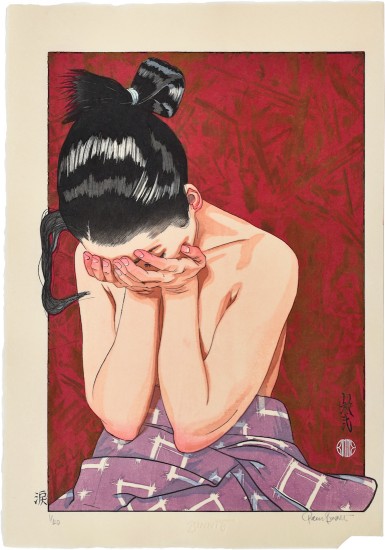
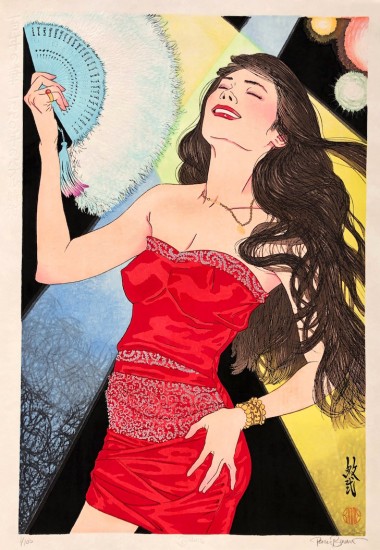
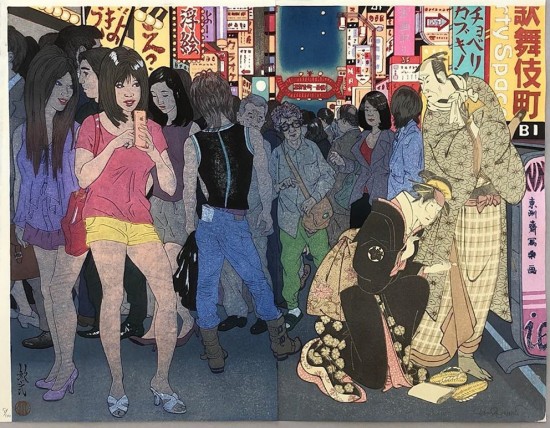
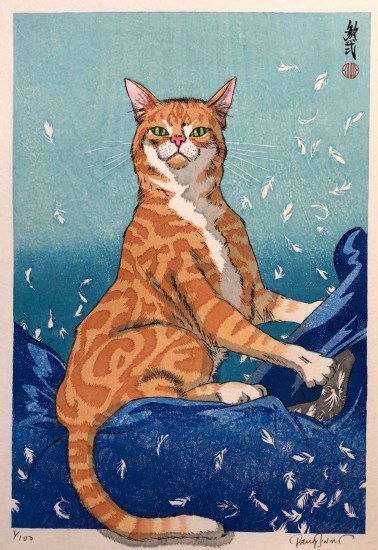

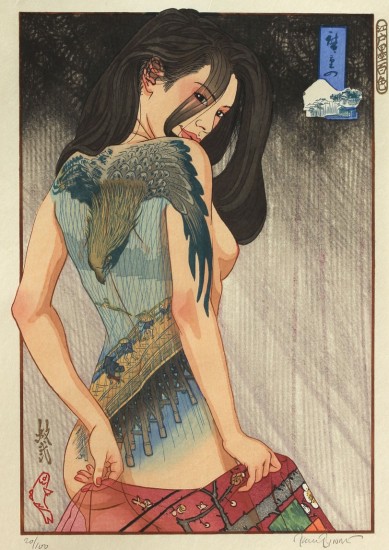
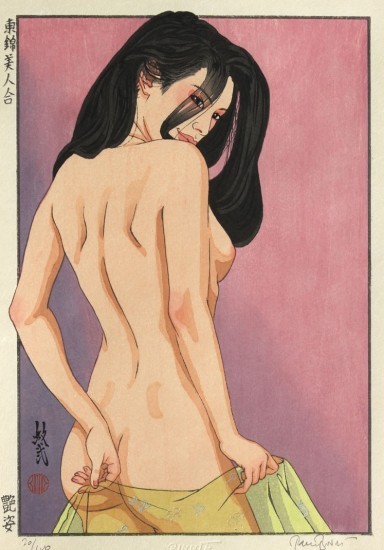



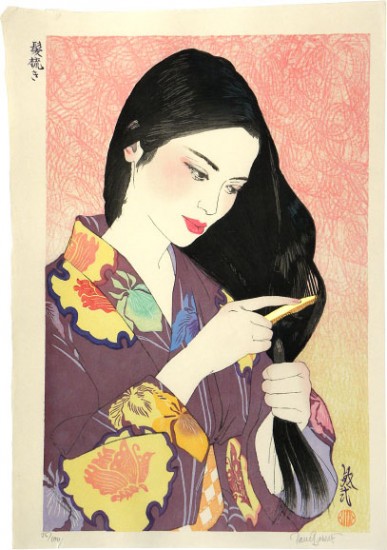

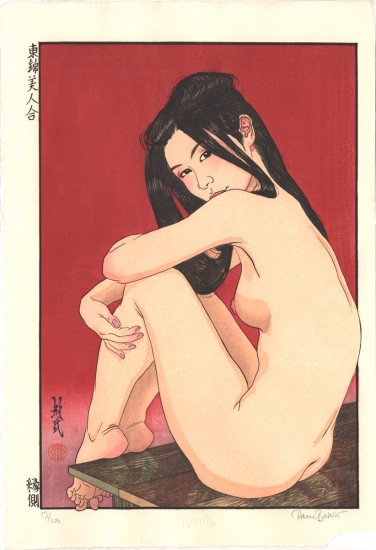
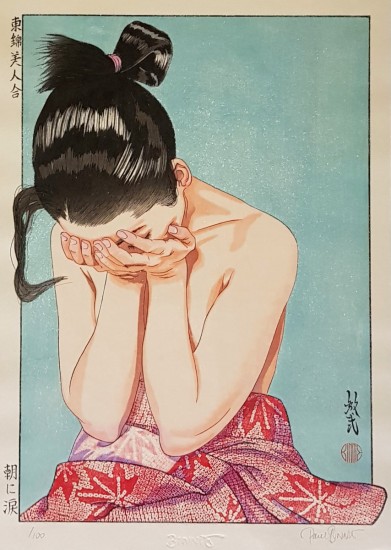
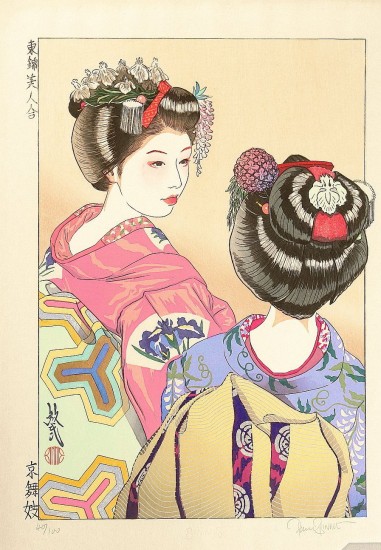


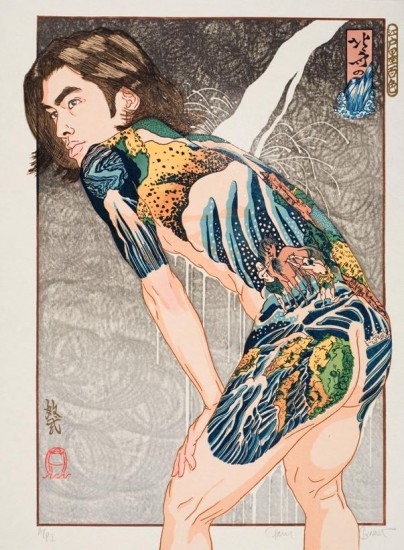



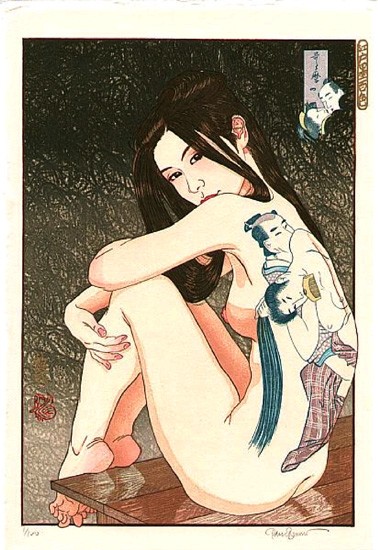

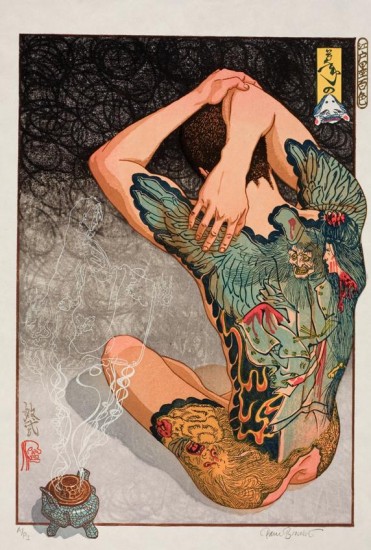

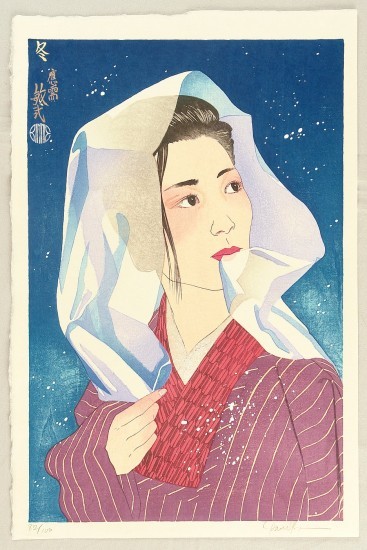

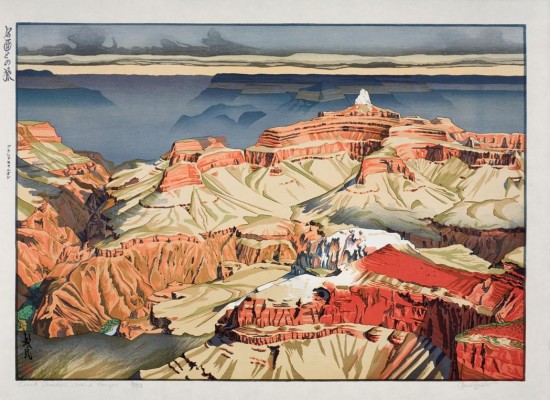

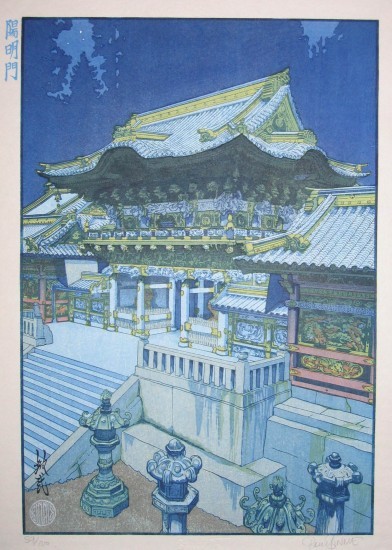

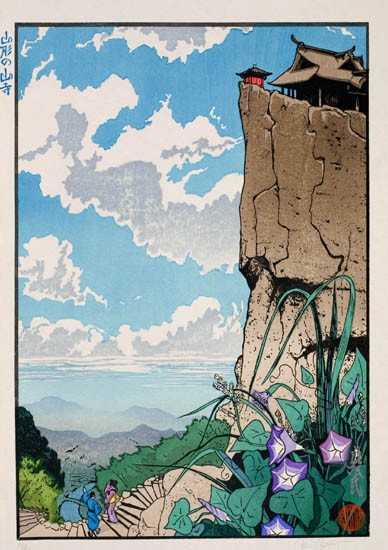

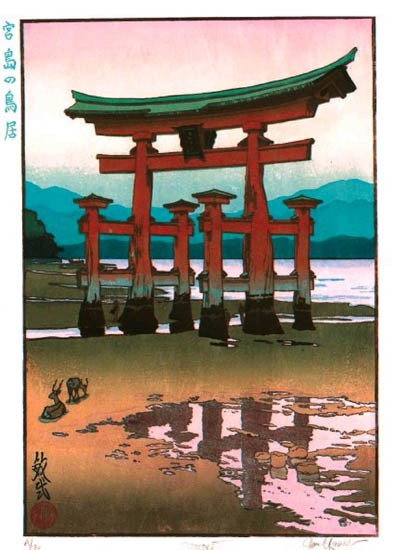


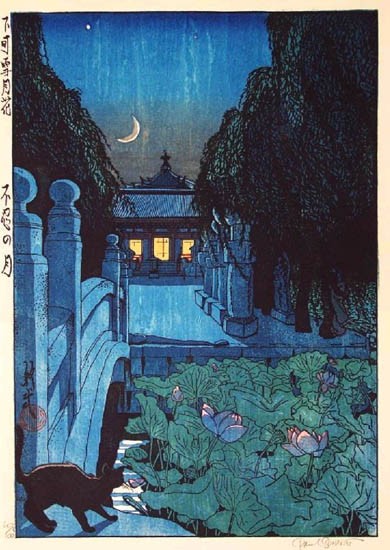
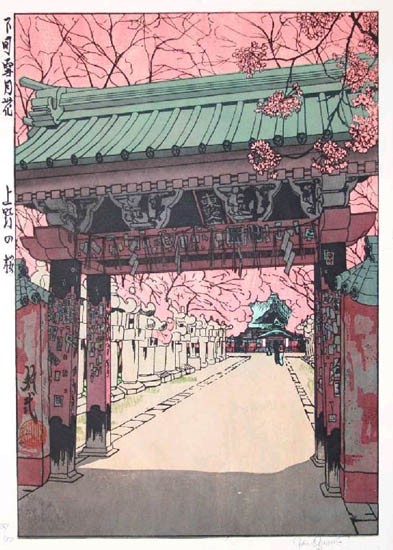

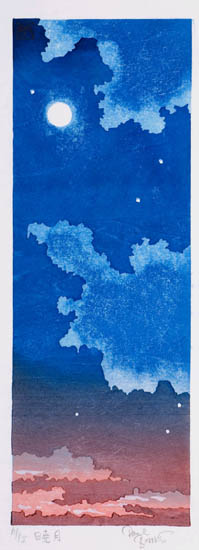








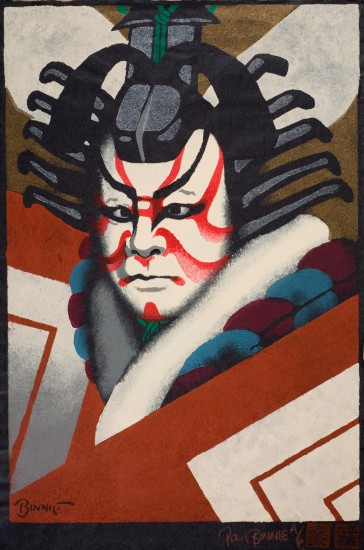


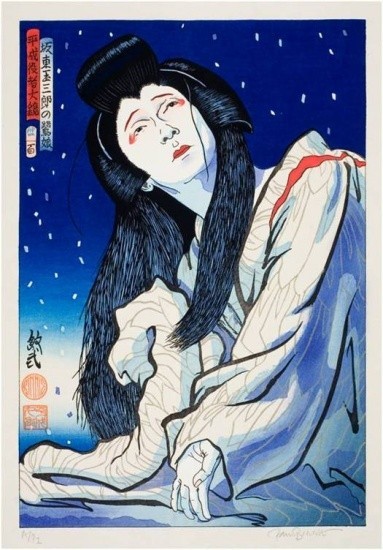
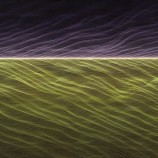 Ann Aspinwall
Ann Aspinwall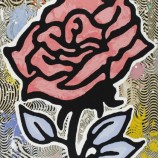 Donald Baechler
Donald Baechler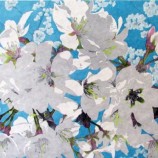 Rica Bando
Rica Bando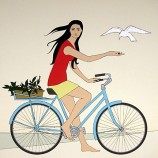 Will Barnet
Will Barnet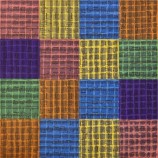 McArthur Binion
McArthur Binion Paul Binnie
Paul Binnie Richard Bosman
Richard Bosman Christian Bozon
Christian Bozon Richard Lang Chandler
Richard Lang Chandler Chuck Close
Chuck Close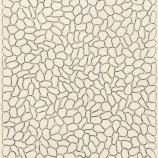 Tara Donovan
Tara Donovan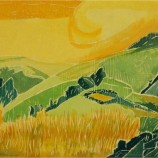 Aline Feldman
Aline Feldman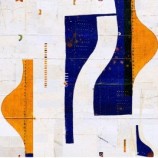 Caio Fonseca
Caio Fonseca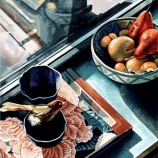 Jane Goldman
Jane Goldman Jean Gumpper
Jean Gumpper Richard Haas
Richard Haas Keiko Hara
Keiko Hara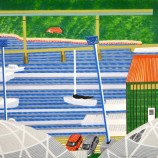 Yvonne Jacquette
Yvonne Jacquette Deborah Kass
Deborah Kass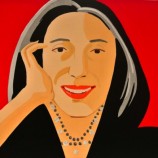 Alex Katz
Alex Katz Daniel Kelly
Daniel Kelly Robert Kipniss
Robert Kipniss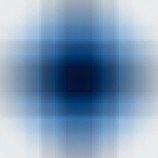 Patsy Krebs
Patsy Krebs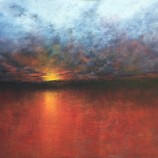 Rebecca Last
Rebecca Last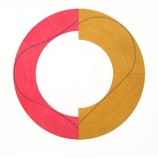 Robert Mangold
Robert Mangold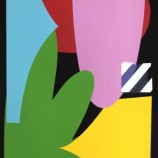 Maser
Maser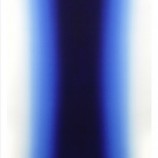 Betty Merken
Betty Merken Frederick Mershimer
Frederick Mershimer Melissa Meyer
Melissa Meyer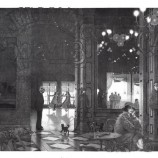 Peter Milton
Peter Milton Anja Percival
Anja Percival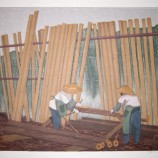 Joshua Rome
Joshua Rome Peri Schwartz
Peri Schwartz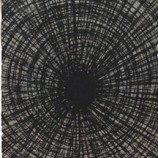 David Shapiro
David Shapiro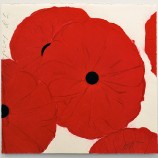 Donald Sultan
Donald Sultan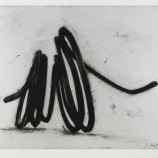 Bernar Venet
Bernar Venet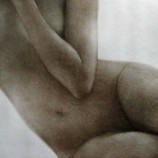 Mikio Watanabe
Mikio Watanabe Tom Wesselmann
Tom Wesselmann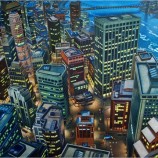 Art Werger
Art Werger Yutaka Yoshinaga
Yutaka Yoshinaga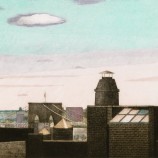 Linda Adato
Linda Adato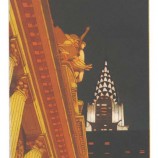 Michael Arike
Michael Arike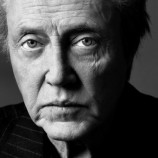 Daniele Barraco
Daniele Barraco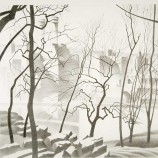 William Behnken
William Behnken Grace Bentley-Scheck
Grace Bentley-Scheck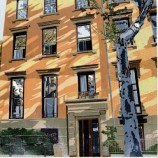 Walter Buttrick
Walter Buttrick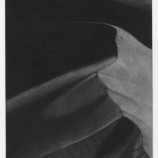 Holly Downing
Holly Downing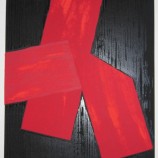 Rikizo Fukao
Rikizo Fukao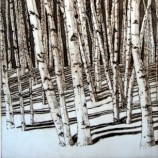 Eric Goldberg
Eric Goldberg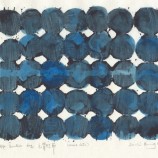 Su Li Hung
Su Li Hung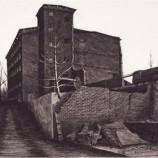 Sean Hurley
Sean Hurley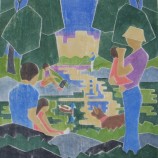 Martha Ives
Martha Ives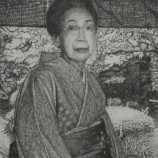 Takuji Kubo
Takuji Kubo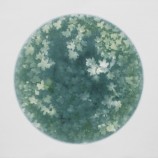 Tomomi Ono
Tomomi Ono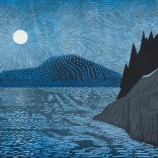 Mary Prince
Mary Prince DeAnn L Prosia
DeAnn L Prosia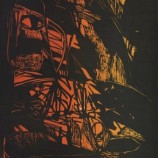 Ilse Schreiber-Noll
Ilse Schreiber-Noll Allan Simpson
Allan Simpson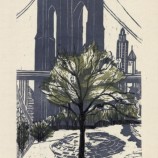 Ellen Nathan Singer
Ellen Nathan Singer Richard Sloat
Richard Sloat Francisco Souto
Francisco Souto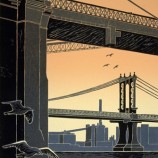 Emily Trueblood
Emily Trueblood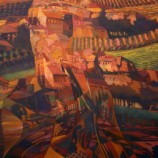 Murray Zimiles
Murray Zimiles